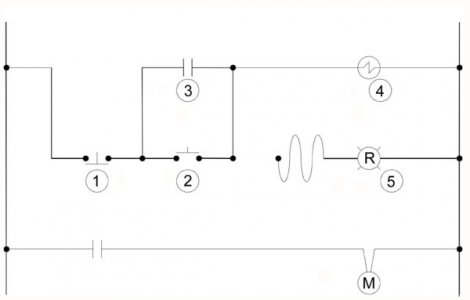Actually, no - there's a (rest of the civilised-) worldwide move towards double-pole switching particularly for power outlets serving "portable appliances" and within those appliances, I suggest you read the latest edition of the Wiring Regulations that apply in the UK (17th edition, with a few addenda while we work up to the next*) for a good "grounding" - THIS IS NOT AMERICA.
How the world outside the USA practices electrical installation - we don't split (centre-tap) a single 230-volt phase for two 115-volt services, our distribution is three phases each of 230v to neutral (which is at earth potential, or *should* be), domestic service is normally one of the three phases plus the neutral (which *may* be tied to local earth, called PME in European parlance, and IS ALWAYS earthed at the distribution transformer ("substation" in non-technical terms)), industrial / commercial service takes all three phases plus neutral for 230v (phase-to-neutral) ancillaries (lights, computers, small heaters, kettles

), 415v (phase-to-phase) for heavier loads (machinery, air conditioning, heating etc.).
Earth-leakage breakers aka ELCBs (similar in concept to the USA's GFCI which senses current actually from the ground wire so require adequate ground connectivity) have been overtaken by Residual Current Circuit Breakers or RCCBs, ( AKA Residual Current Devices, RCDs), they don't directly measure earth or neutral current, they measure imbalance in the supply (30mA is typical. they go as low as 5mA for medical applications, up to 100mA for use only to protect cabling, e.g. buried sub-mains) so should any current not flow in and out through the phase and neutral (or the 3 phases and neutral) indicating a current to earth, they trigger and shut down the supply. Hence the name "residual current"- they DO NOT rely on earth cable continuity, and will trip safely without a cabled earth if there's a "dangerous" current imbalance.
Rest-of-the-world wiring is rather different from the USA, e.g. if a neutral wire fails/goes faulty, we don't have appliances dying or catching fire, as there isn't the risk of low-power, low- (115) -voltage equipment finding itself supplied by 230v, ours is 230v all though and a failed neutral just stops everything working (BUT can leave everything potentially live through the other conductor - hence double-pole switching in case of phase-neutral reversals).
Some examples of common-or-garden household electrical fittings:
UK-standard RCD:
https://www.tlc-direct.co.uk/Images/Products/size_3/CPR100.JPG
Dual Pole switched (UK) sockets:
https://www.tlc-direct.co.uk/Products/BG822DP.html
Dual-pole MCB (Magnetic Circuit Breaker - found in consumer electrical supplies)
https://www.tlc-direct.co.uk/Products/CM9810B.html
"Incomer" main supply switch fitted at far end of a consumer unit - note it's double-pole:
https://www.tlc-direct.co.uk/Manufacturers/Contactum_C/CP_Range_Main_Switch/index.html
This is the site for my local electrical supplies house (part of a nationwide chain), no endorsement intended nor association other than as a happy customer! This is all vanilla, standard-fit stuff for homes / premises built since well before the last millennium ended.
Dave H. (the other one - and a qualified electrician for the UK, along with electronic engineer)
* BS 7671: 2008 (Seventeenth Edition) 3rd Amendment - 2015 . British Standards Institute, about $100 US, following it is *compulsory* for any electrical work that attaches to any kind of supply above 12 volts.
https://www.tlc-direct.co.uk/Products/BK1717slash3.html?ad_id=15790937220&source=msn&kw=wiring regulations&matchtype=e&qry=wiring regulations&msclkid=5c061636477a13c0fb064c87f981e464


